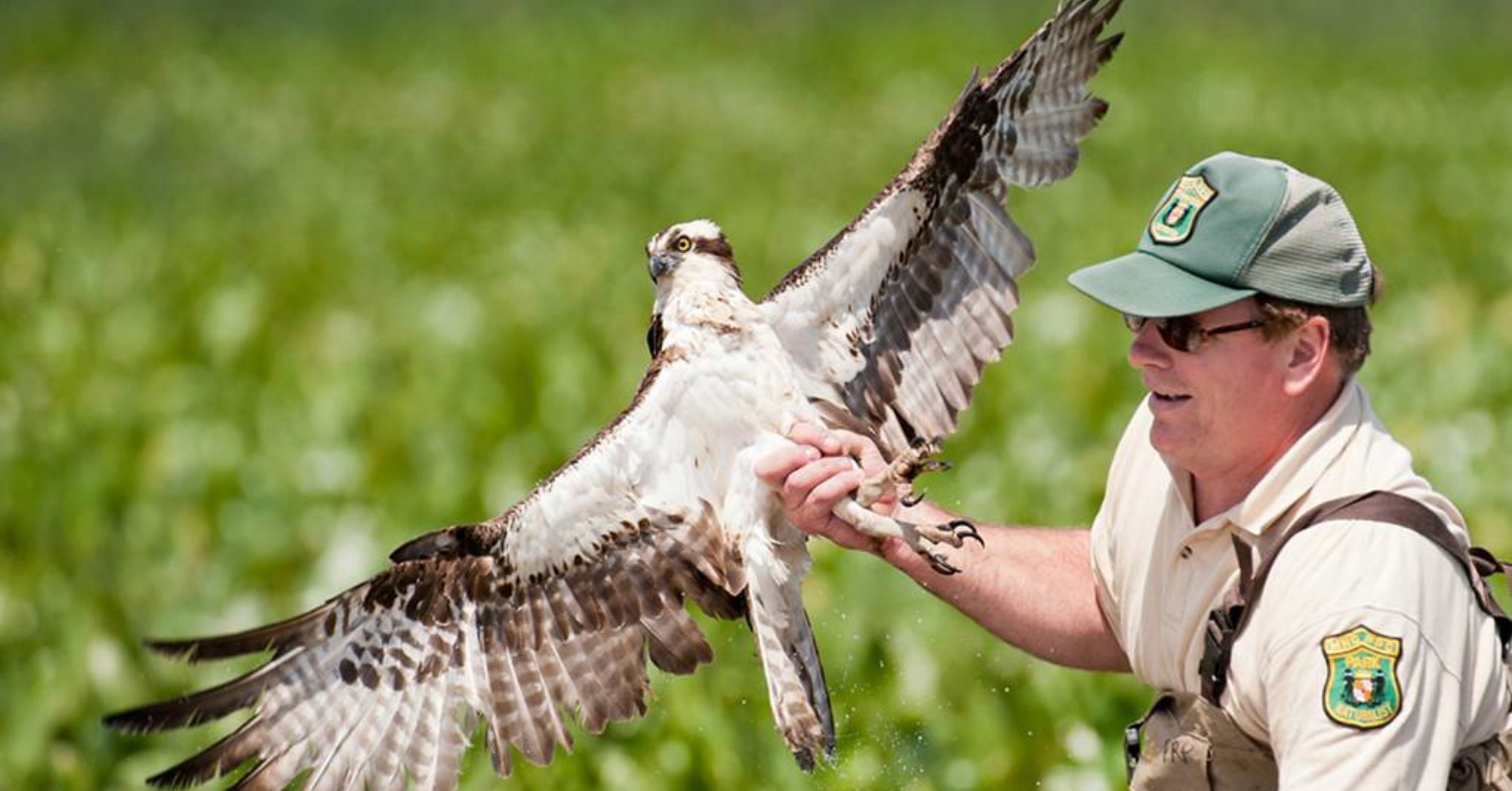Look to the sky along the Chesapeake Bay shoreline and you’ll likely see an osprey. The Bay supports the largest osprey breeding population in the world. From a low of 1,500 breeding pairs due to DDT contamination in the 1970s, osprey populations have rebounded to an estimated 8,000 to 10,000 breeding pairs in the mid-Atlantic. How do we know stats on osprey population, health, and migration? Ask Park Naturalist Greg Kearns and he’ll answer with his banding tools in his hands.
Join Greg to experience ospreys in YOUR hand, as chicks are banded, measured, and counted at their nesting platforms at the Patuxent River Park. The banding data collected is sent to the Bird Banding Laboratory at the Patuxent Wildlife Research Center to help scientists understand migration patterns, population dynamics, sources of mortality, and bird lifespans. Much of the critical information known comes from tracking and reporting banding data.
We’ll learn how Greg and his interns have installed and maintained over 100 osprey nest platforms along 25 miles of river and banded over 5,000 adult and juvenile ospreys. With the osprey population growing, the birds have exceeded the availability of natural nesting sites. Human-made nesting structures are almost always occupied, and ospreys then choose to nest on cell towers and lighting structures. This can create conflicts with human values and needs.
Greg Kearns, a Senior Park Naturalist for over 38 years at Patuxent River Park in Upper Marlboro Maryland, is an accomplished photographer, birder, and an authority on the Sora rail, osprey, and wetland ecology at Jug Bay. He was named Conservationist of the Year by the Maryland Dept. of Natural Resources in 2006 for his work on the restoration of the wild rice marshes on the river. He also received the Jug Bay Award for significant contributions to the environment and was given the 2017 National Wetlands Restoration and Conservation award from the Environmental Law Institute in Washington, DC. Greg does the technical monitoring work and also makes it accessible to the public through these unique educational opportunities.
Difficulty: Easy, ability to walk on the dock, step up in the boat and step down to disembark.
Remember to
- Dress according to the weather. Layers of clothing work best. For sunny days, a hat with a brim may be needed. Seating in the boat is both covered and uncovered.
- Wear sturdy closed-toe hiking boots or sneakers with non-slip soles that can safely handle slippery surfaces.
- Bring water, snacks, sunblock, bug spray, and for your camera, an extra battery, extra memory card, and lens-cleaning cloth.
- No pets, please.
- The exact meeting location will be found in your registration confirmation email.
- Ages 10 and up.
NEW – Payment and Cancellation Policy: Payment is due online at the time of registration. Cancellations made seven or more days in advance of the event will receive a refund minus a 5% processing fee. Cancellations made within seven days of the event will not receive a refund but may be transferred to a friend.
For questions, please email Jayne at JAsh@marylandnature.org.

